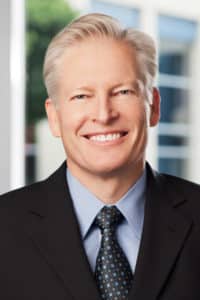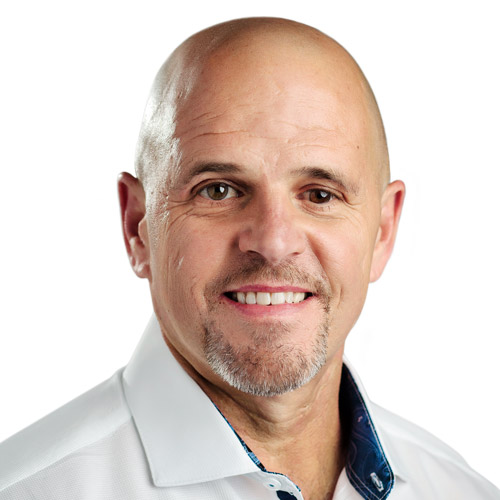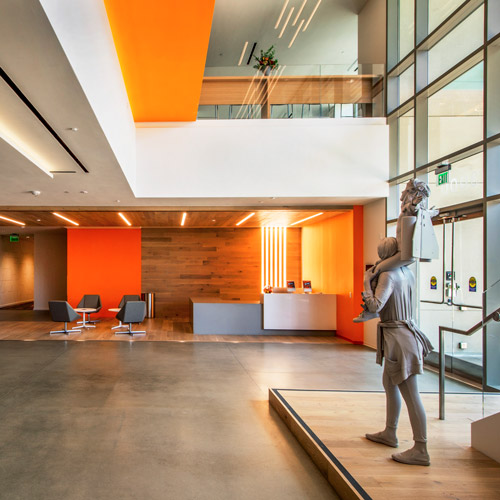
To say Norm Fjeldheim has construction in his blood is putting it mildly.
His grandfather worked on the Hoover Dam, one of the largest public works projects in the nation’s history, and his father was a successful GC in the Bay Area, specializing in concrete works. His father didn’t see hard work as the sole province of adults, and he began bringing Fjeldheim to construction sites when Fjeldheim was 11, tasking him with sweeping up sawdust and picking up trash.
At 16, Fjeldheim joined the carpenters union as an apprentice. He worked every summer and every holiday, picking up more skills along the way. Then he decided to enter college at Cal Poly in San Luis Obispo to add academic knowledge to what he had learned on the sites. He loved every aspect of building and chose to major in architecture. He quickly discovered, however, that the design side was a bit too abstract for him.
“The professors were talking about creating designs and the aesthetics of designs,” he says. “But I was always wondering, How are you going to build that? I would argue with the professor about how a building would get built. The pure architecture approach—‘Let’s make something that’s beautiful’—didn’t take into account the cost of it and how it would get done, and that’s not the way my mind worked.”
Two years in, he quit school to work full-time for his father, first as a carpenter foreman and then as a job superintendent. Still searching for the right career, he entered San Diego State as a business major. One of the required courses for the major was information technology programming, and to his surprise, Fjeldheim loved it.
“I was a little nervous because I didn’t know much about it, but I took the class and something just clicked,” he says. “It was a logical approach to problem-solving that fit really well with me and the way my mind worked.”
Narrowing his area of study to business information systems, he realized that learning about both business and IT would give him a niche in construction that would unite all his interests.
At a job fair close to his graduation date, he interviewed with Qualcomm, a start-up at the time, and they hired him on the spot. It wasn’t construction, but it was in San Diego and paid well.
“At that point, I stepped away from my lifelong goal of going into construction and took this 90-degree turn,” Fjeldheim says. “And I loved it, I did well at it, and I enjoyed it. I did always have a foot in the door in facilities at the company, designing data centers and power plants, but my primary responsibility was IT.”
Fjeldheim left Qualcomm after 28 years with the company and ended up interviewing with Illumina. To his surprise, he was asked during the interview if he’d be interested in running facilities as well as IT. His dream of combining his two areas of interest was finally fulfilled.
Fjeldheim has a lot on his plate in both aspects of his role, given that Illumina has been undergoing a period of rapid growth. The company is building a new manufacturing center in Wisconsin, consolidating facilities in England, and expanding in Asia. The latest Illumina project that has Fjeldheim excited about coming to work every day is the new campus the company is building to bring everyone from its four Bay Area offices into the same space.
“It’s designed to replicate a college atmosphere that recent graduates will feel at home in,” he says. “We’re implementing a lot of new concepts on this campus. Most Silicon Valley campuses consist of a building with nothing around it. This is a cluster of buildings around a courtyard, with open-air seating so that people can work outside. Wi-Fi will blanket the campus. These are things you don’t usually see.”
With this and many other exciting projects ahead of him, Fjeldheim relishes that he has finally fulfilled his longtime dream of merging his dual passions into one job.
“You couldn’t have put together a better offer in terms of scope,” he says. “I enjoyed IT but always wanted to get back into facilities, and here I do both. I get to problem-solve in both areas. I get to solve business problems on the IT side, and I’m also creating new buildings and coming up with new workplace designs for the employees. It’s just been amazing.”
 A Passion for Animation
A Passion for Animation
Work is vastly fulfilling for Fjeldheim, but he has also turned to a hobby, 3D animation, to gratify his creative side. He plays with digital sculpting programs and 3D modeling programs to create animations as well as still images (above). The programs allow him to simulate architecture work, design landscapes, and create animated characters. He loves it because, unlike aesthetics, the 3D building is governed by the same rules that govern building in the actual world. It’s much like Fjeldheim himself – creative, but always grounded in reality and the pragmatic.
“I get to put things together not in a way that they couldn’t exist, but following the same rules of reality,” he says. “I enjoy the artistic aspect of it; it gratifies my creative side. I could never let go of that part of how my mind works.”
“Congratulations to Norm Fjeldheim on his well-deserved recognition. With capabilities and experience that assure innovative, reliable, adaptable, and precise engineering and design solutions, EXP has been fortunate to grow with Illumina through the years and hopes to remain its trusted partner for many more to come.” —Rachael Sampson, PE, EXP
 A Passion for Animation
A Passion for Animation

